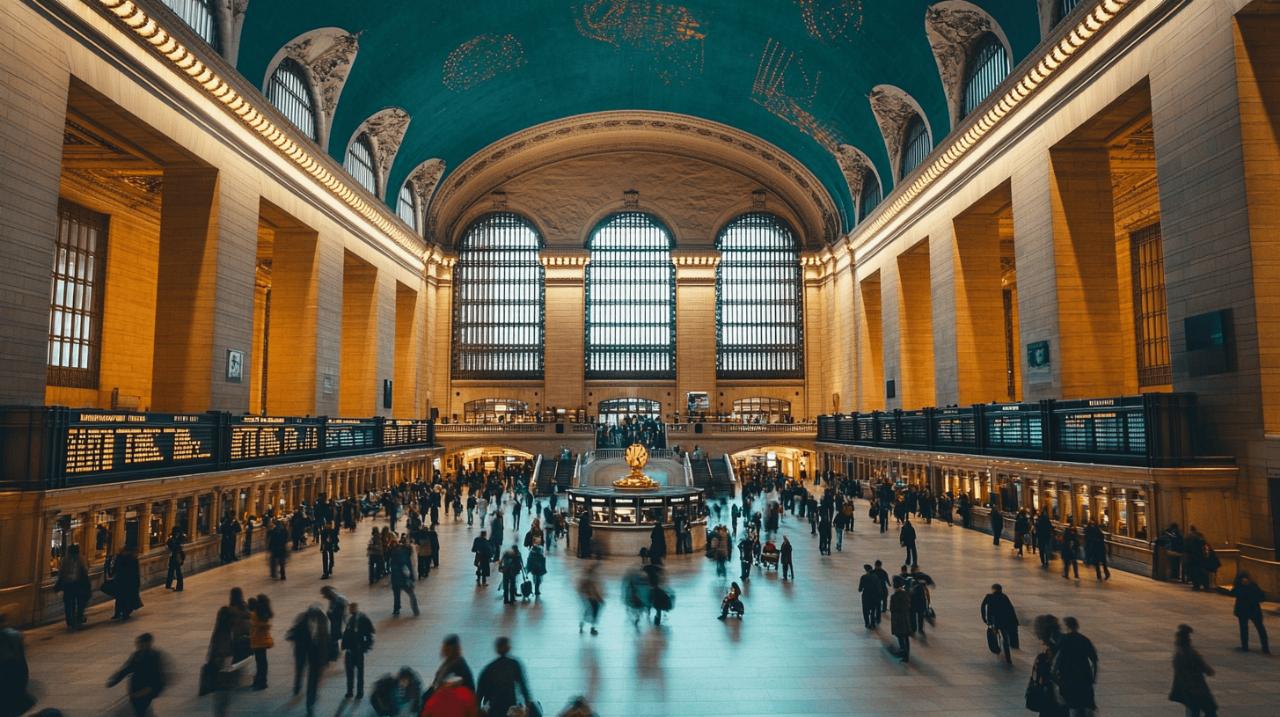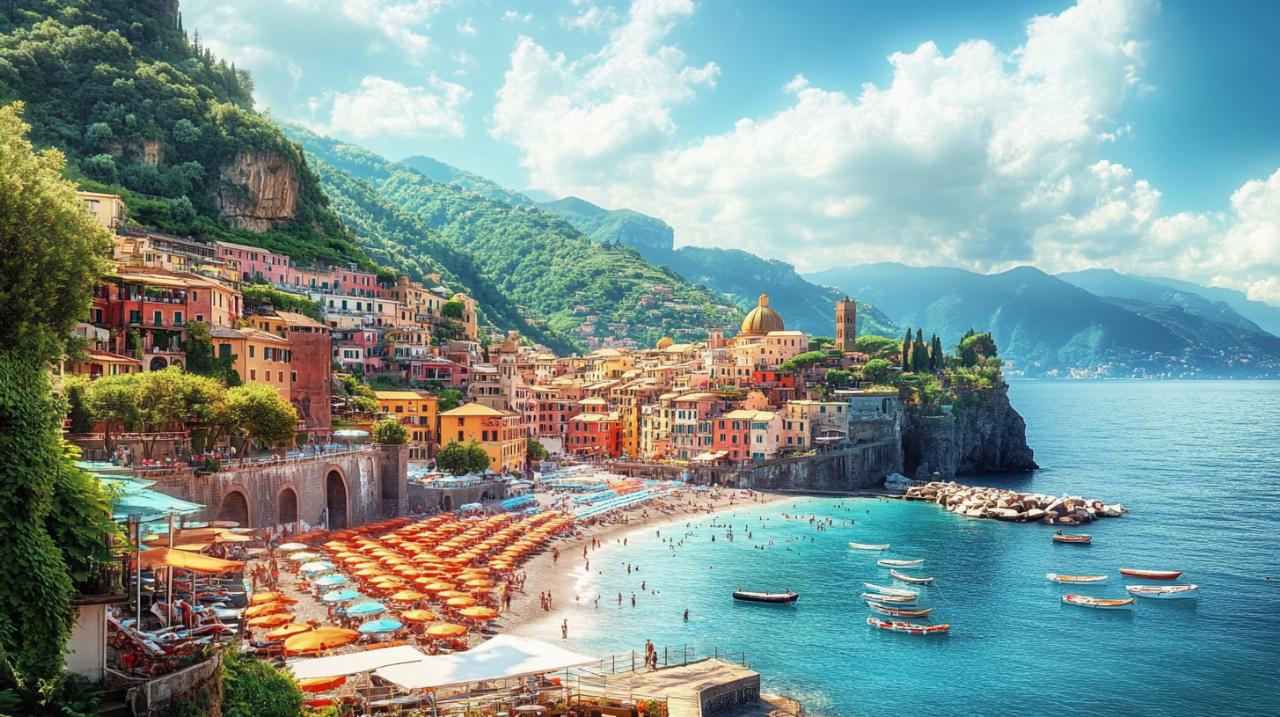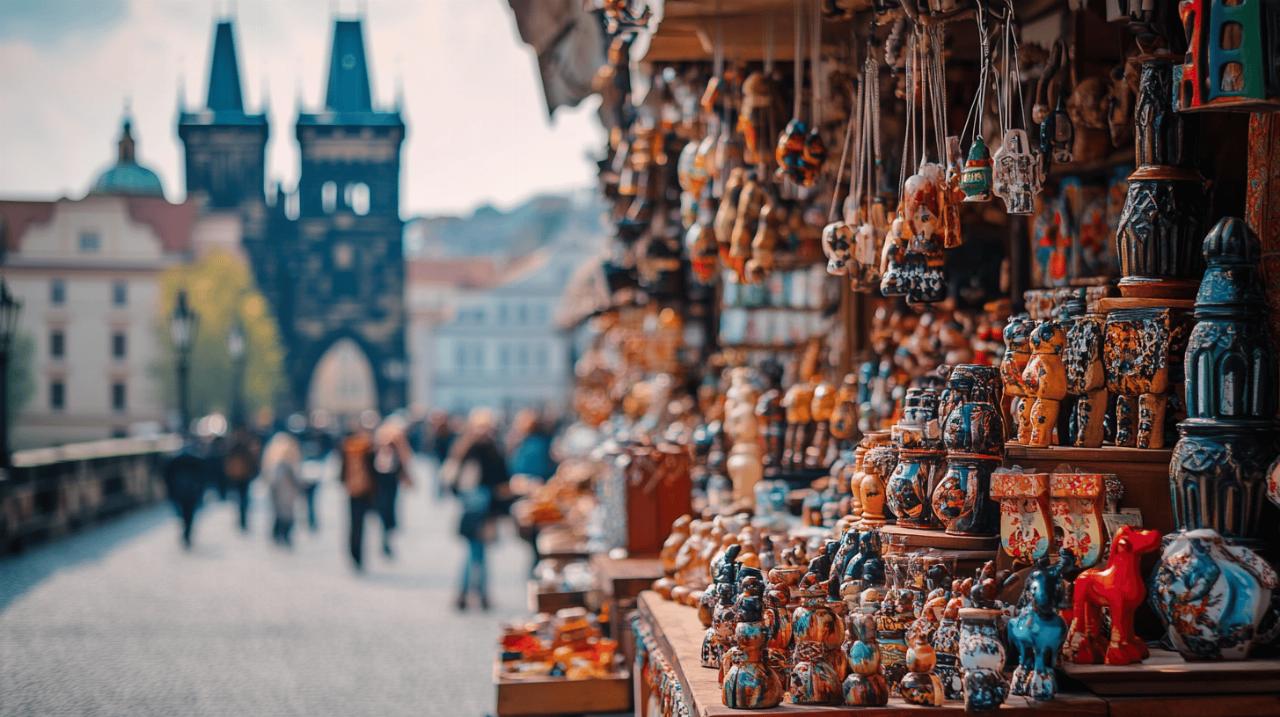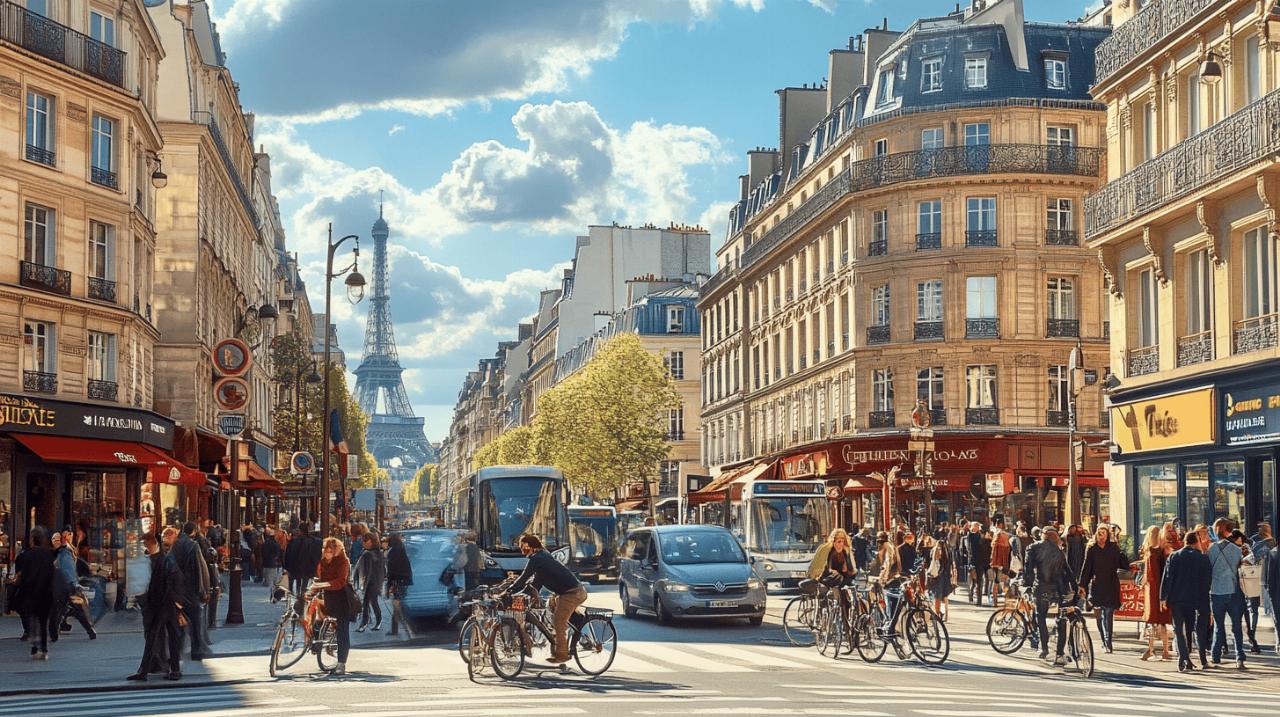Nestled in the heart of Manhattan, Grand Central Terminal stands as a testament to New York City's architectural prowess and historical significance. More than just a transit hub, this landmark represents the ambition, artistry, and innovation that defined America's gilded age. Behind its majestic façade lies a labyrinth of hidden passages, secret rooms, and fascinating stories that have captivated visitors for generations.
The architectural marvel of manhattan
When Grand Central Terminal officially opened its doors on February 2, 1913, over 150,000 curious New Yorkers flocked to witness the unveiling of what would become one of the city's most beloved landmarks. The terminal emerged from a ambitious vision to create not just a functional train station, but a grand monument worthy of New York's growing importance. The project was partly prompted by a tragic collision between two steam engines in 1902, which accelerated plans to reimagine the earlier Grand Central Depot that had stood at the site since 1871.
Beaux-arts grandeur and celestial ceiling
The terminal's Beaux-Arts design showcases the opulence and attention to detail characteristic of early 20th-century architecture. Perhaps most captivating is the main concourse's celestial ceiling, a vast azure expanse adorned with constellations that has fascinated visitors for decades. Interestingly, the astronomical display is backwards—a peculiarity that some attribute to artistic license and others to a simple mistake. A lesser-known fact is that the ceiling's current appearance isn't original; a section of uncleaned brick reveals the accumulated grime from air pollutants, deliberately preserved during restoration to showcase the dramatic transformation.
The iconic four-faced clock: meeting point of millions
Crowning the information booth in the main concourse sits the famous four-faced brass clock, estimated to be worth millions and serving as the quintessential meeting spot for generations of New Yorkers and visitors alike. While this centrepiece draws attention within, the exterior boasts another horological marvel—the world's largest Tiffany clock, measuring an impressive 14 feet in diameter, adorning the 42nd Street façade. These timepieces have witnessed countless reunions, farewells, and the daily rhythm of city life flowing through the terminal's halls.
Hidden wonders beneath the surface
Beyond its visible grandeur, Grand Central harbours secrets that most of the 750,000 daily visitors never encounter. The terminal's subterranean reaches are vast—its basement covers an astonishing 49 acres, stretching from 42nd to 97th Street, making it the largest basement of any building in New York City. This underground expanse has played host to everything from military operations to exclusive social venues.
The whispering gallery: acoustic phenomenon
Near the famous Oyster Bar restaurant lies one of Grand Central's most enchanting secrets—the Whispering Gallery. This acoustic anomaly allows visitors standing at diagonal corners of the domed space to hear each other's whispers with remarkable clarity, despite being several metres apart. The perfect arches create a sound pattern where whispers travel along the curved surface to reach the opposite corner. Whilst this phenomenon delights visitors today, historians debate whether this acoustic property was an intentional design feature or a happy architectural accident discovered after construction.
The historic oyster bar: culinary institution since 1913
Opening its doors the same day as the terminal itself, the Grand Central Oyster Bar has served as a culinary institution for over a century. Situated beneath the main concourse, this restaurant showcases another architectural treasure—magnificent Guastavino tile vaulting that creates both visual impact and contributes to the acoustic properties of the Whispering Gallery adjacent to it. The restaurant weathered numerous changes in the terminal's fortune, including the difficult years of the 1970s and 1980s when the building suffered from neglect before its eventual restoration.
Secret passages and forgotten spaces
Grand Central's mystique extends to its network of hidden passageways and secretive chambers that have served purposes ranging from practical utility to clandestine activities. These forgotten spaces tell stories of a bygone era when the terminal was not just a transit hub but a nexus of social, cultural, and sometimes covert activities.
The Underground Network of Tunnels and Platforms
Beneath the bustling main concourse lies an intricate network of tunnels connecting various parts of the terminal and extending to nearby buildings. Perhaps most famous is Track 61, a secretive platform that reportedly served as a clandestine transportation route for notable figures, including President Franklin D. Roosevelt, allowing them to enter the Waldorf Astoria Hotel undetected. Another hidden gem is the secret passageway that once connected the terminal to The Roosevelt Hotel, allowing guests to travel between the two landmarks without facing the elements. The 2023 addition of Grand Central Madison further expanded this subterranean network, connecting the Long Island Rail Road to the terminal via remarkably long escalators that carry passengers on a nearly two-minute journey 14 stories below ground.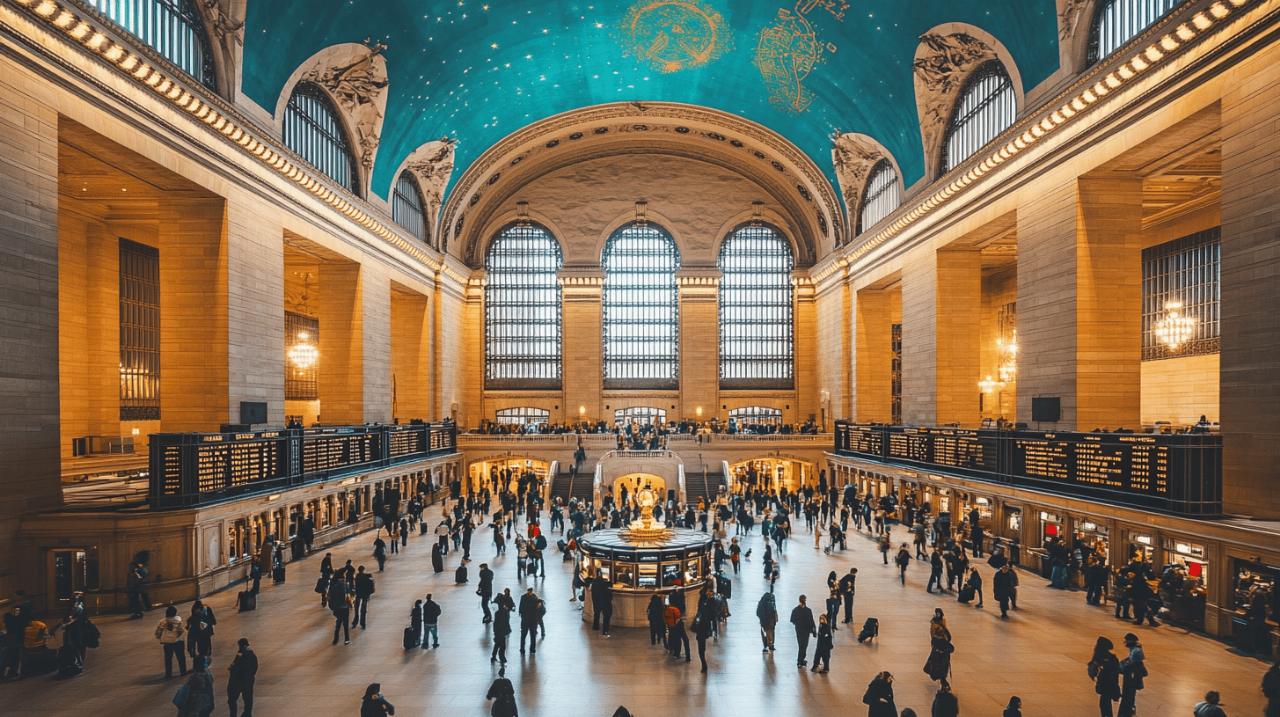
M42: the concealed basement that changed history
Perhaps the most strategically significant of Grand Central's hidden spaces is M42, a concealed room housing the converters that provide electricity for East Coast transport operations. During World War II, this room was so crucial that armed guards protected it, as sabotaging these converters could have paralysed troop movements along the Eastern Seaboard. The location was so secretive that it didn't appear on any public maps for decades. Today, M42 remains largely inaccessible to the public, continuing its essential but unseen role in powering transportation infrastructure.
Grand Central as a Cultural Icon
Beyond its architectural and engineering significance, Grand Central Terminal has cemented itself in American cultural consciousness, appearing in countless films, novels, and artistic works. Its grand spaces have inspired generations of creators and served as backdrop to both fictional dramas and real historical turning points.
From silver screen to literary imagination
The terminal's majestic concourse has featured in numerous classic films and television shows, becoming an instantly recognisable symbol of New York City. From action sequences to romantic reunions, filmmakers have been drawn to the dramatic possibilities offered by the terminal's soaring spaces and constant human activity. Less known is that Grand Central once housed its own cinema—a 242-seat movie theatre that allowed commuters to catch a film while waiting for their trains. The sixth floor of the terminal also once housed the Grand Central School of Art, nurturing creative talent within the same building that inspired so many artistic depictions.
The terminal's rebirth: preservation and modern legacy
By the 1970s, Grand Central had fallen into disrepair, facing threats of demolition or drastic alteration. A pivotal moment came in 1976 when Jacqueline Kennedy Onassis joined preservation efforts to save the terminal from a proposed 55-story tower that would have fundamentally altered its character. Her advocacy helped secure landmark status protection and ultimately led to the massive restoration project that began in 1988. With an investment of nearly $600 million, including $435 million specifically for structural improvements, the terminal underwent a comprehensive renewal, culminating in an internationally celebrated reopening in 1998. Today, Grand Central continues to evolve while maintaining its historic essence, with recent additions like Grand Central Madison ensuring this architectural treasure remains relevant for future generations of New Yorkers.
Mysteries of Track 61 and Exclusive Underground Access
Grand Central Terminal stands as a majestic landmark in the heart of New York, capturing the imagination of visitors since its grand opening on 2 February 1913. While most of the 150,000 visitors who flocked to the terminal on opening day marvelled at its magnificent main concourse, Tiffany Clock, and backwards constellations painted across the ceiling, few were aware of the secretive underground network that would later become the stuff of legend. Beneath the bustling corridors and elegant architecture lies a hidden world of exclusive passageways, private platforms, and clandestine transport routes that have served America's elite for generations.
The presidential secret railway and roosevelt's hidden platform
Deep within the 49-acre basement of Grand Central Terminal—the largest basement of any building in New York City—lies Track 61, a secretive railway platform designed for highly discreet access to the terminal. This underground space serves as a means of clandestine transportation for distinguished individuals wishing to enter or exit the building away from public eyes. The track gained notoriety during Franklin D. Roosevelt's presidency, as it provided him with a private entrance to avoid public attention to his mobility limitations. A specially designed railway car would transport the president directly into the basement of the terminal, where his armoured vehicle could be waiting to whisk him away through subterranean passages. This extraordinary piece of railway transport history represents the intersection of architectural ingenuity and historic preservation, safeguarding both security and dignity for America's leaders during a pivotal period in the nation's development.
The waldorf-astoria connection and luxury private transport
The mysterious Track 61 extends beyond mere presidential use, creating an exclusive underground link between Grand Central Terminal and the prestigious Waldorf-Astoria hotel. This hidden feature of the terminal's basement served the wealthy and famous throughout the 20th century, offering a level of privacy impossible to achieve aboveground. The connection represented the height of luxury transport during New York's gilded age, allowing notable guests to bypass the bustling main concourse entirely. Similar secret passageways once connected the terminal to other landmark buildings, including The Roosevelt Hotel, creating an invisible network beneath Manhattan's streets. During the golden era of railway transport in the 1920s and 1930s, when buildings like the Biltmore Hotel and Chrysler Building were constructed near Grand Central, these subterranean routes became essential infrastructure for New York's elite. While public access to these areas remains strictly limited, their existence adds another fascinating layer to the rich architectural history of this beloved New York landmark, which narrowly escaped demolition thanks to preservation efforts led by Jacqueline Kennedy Onassis in the 1970s.

